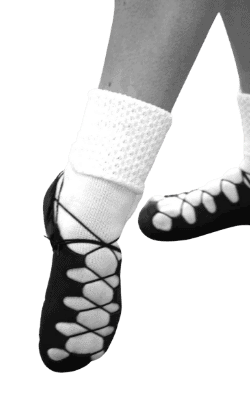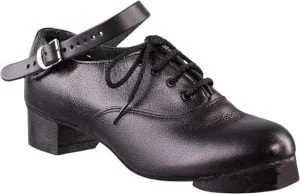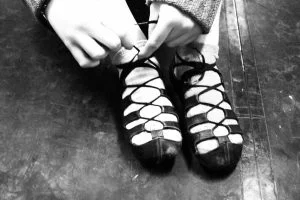As a beginner Irish dancer, you undoubtedly have questions about how to forge a career and perform at your peak.
You might ask yourself, “What are the essential skills for a beginner Irish dancer?” How can I start off being successful?’ Or you’re curious about what mistakes to avoid when stepping onto the stage.
Despite your lack of experience, don’t let that prevent you from seeking guidance and asking questions! Here we offer five indispensable pieces of advice for aspiring Irish dancers and three common mistakes you should avoid.
Table of Contents
Toggle
Introduction
If you’re new to the Irish dancing scene, we suggest you contact one of the many dance schools with qualified teachers. Many, if not all, will be more than happy to offer you a no-obligation introductory lesson.
“Having a go” will help you decide if Irish dancing is something for you.
It’s important to consider the teaching style of the instructors at the dance school. Does the style fit with how you learn? Finding what works best for you is essential when embarking on any venture. So let this article guide you as you explore this fascinating world of Irish dance!
Let’s get started with some basics!
Turn out your feet!
You will hear this a LOT from your dancing teacher. It’s one of the core techniques for any Irish dancer.
“Turn out” in Irish dancing refers to positioning the dancer’s feet and legs in an outward direction, away from the body’s centerline. It involves rotating the legs from the hips so that the toes point away from each other, creating a V-shape with the feet.
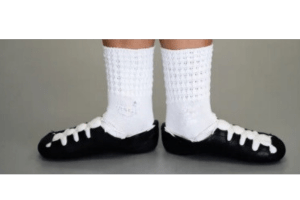
Turn out is a key component of Irish dance technique and plays a significant role in the execution of various steps and movements. It is particularly emphasized in soft shoe dancing, such as reel and slip jig, where precise foot placement and turnout contribute to the elegance and grace of the dance.
Irish dancers can create clean lines, maintain balance, and execute intricate and precise footwork by achieving a strong and controlled turn out. Turn out also enhances the visual appeal of the dance, adding beauty and symmetry to the overall performance.
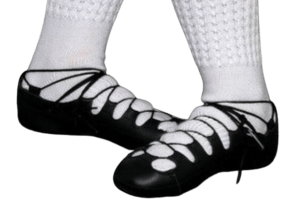
Developing good turn out in Irish dancing requires flexibility, strength, and technique. Dancers work on stretching exercises to increase the flexibility of their hips, thighs, and calves, allowing for an increased range of outward rotation. Core strength and alignment are also essential for maintaining balance and stability while executing turns and jumps with turned-out legs.
Irish dancers strive to maintain consistent turn out throughout their performances, even in challenging and dynamic movements. By mastering this technique, dancers can achieve a polished and professional appearance, enhancing the overall quality of their performances and captivating audiences with the precision and artistry of their footwork.
Keep Your Arms Straight & Behind Your Back
Another thing that new Irish dancers struggle with is keeping their arms straight and behind their backs. When dancing, your arms should remain behind you and parallel with one another. This can be difficult for a beginner because it feels unnatural. But with persistence and practice, it will feel less uncomfortable, and you will get used to it.
When executing a point in Irish dancing, the dancer strives for a clean and elongated line, showcasing control and precision.
Keep your arms straight and parallel with one another during each step of the dance routine and transitions. Extending any part of your body away from the center – arms or legs – will make it more difficult to maintain perfect posture.
Keep your elbows tucked in tightly behind you, and roll your shoulders back to prevent slouching.
Pro Tip: Try holding a small sponge between your arms and your torso. The idea is not to drop the sponge. This can help train you to keep your arms still.
Point Your Toes
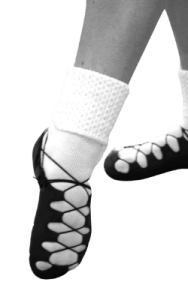
One of the fundamental aspects of Irish dancing is the precise and graceful positioning of the feet. Pointing your toes involves extending the foot and toes fully, creating a straight line from the ankle to the tip of the toe.
Pointing the toes adds aesthetic appeal and contributes to the movements’ overall fluidity and sharpness.
It is particularly important during intricate footwork, such as trebles, clicks, and toe stands, where the pointed toe enhances the visual impact.
Keep Your Knees Crossed
“Crossing at the knee” is a fundamental technique in Irish dancing that refers to the position of the legs when performing various dance movements. It involves crossing one knee over the other while keeping the feet in their original position. This technique is important because it helps to maintain the proper posture, balance, and alignment necessary for executing precise footwork and intricate choreography.
Crossing at the knee allows the dancer to maintain a tight and controlled lower body, which is crucial in performing quick and intricate footwork. In competitive Irish dancing, crossing at the knee is often a critical component of the judging criteria and can significantly impact a dancer’s overall score.
Keep your shoulders back
Keeping the shoulders back adds to proper posture in Irish dancing. Creating an elegant and upright stance is essential. When the shoulders are back, the chest lifts, and the back straightens, which allows the dancer to engage their core muscles and maintain a strong, stable center of balance. This, in turn, enables them to perform complex footwork with speed, precision, and control.
In addition to its technical benefits, keeping the shoulders back is also important for the overall aesthetic of Irish dance. It creates a graceful and poised appearance that is visually striking to the audience. Moreover, in competitive Irish dancing, proper posture is part of the judging criteria, and dancers who demonstrate excellent posture are often rewarded with higher scores.
Therefore, developing the habit of keeping the shoulders back is an essential part of the training process for Irish dancers of all levels, from beginners to seasoned professionals.
Keep Your Head And Eyes Up
Keeping your head and eyes up is an essential aspect of Irish dancing. It helps maintain proper posture and alignment, which is crucial for executing steps correctly and gracefully. In addition, it can improve balance and prevent dizziness during turns and spins. Keeping the head and eyes up also enhances stage presence and overall performance quality by allowing the dancer to engage with the audience and project confidence. In Irish dancing, the upper body should remain upright and still, with the head held high and the eyes focused straight ahead.
Stay High On Your Toes
Staying high on your toes helps to create a light and precise quality of movement. In Irish dancing, steps are often performed with quick and intricate footwork, and staying high on the toes enables dancers to execute these steps with speed and agility.
It also helps to create a distinct and characteristic sound, as the hard-soled shoes worn in Irish dancing produce a percussive effect when striking the floor.
Furthermore, staying high on the toes enhances the aesthetic of the dance by creating an appearance of lightness and lift. Overall, staying high on the toes is a fundamental component of Irish dancing technique, and it requires strength, balance, and control to execute successfully.
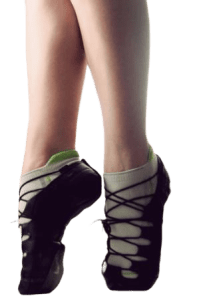
Travel
“Travel” refers to the dancer’s movement across the dance floor in Irish dancing. It is an important aspect of Irish dance as it adds visual interest and dynamics to the performance. Skilled dancers can cover a lot of ground while executing intricate footwork and intricate upper-body movements, creating a captivating visual display for the audience.
Proper travel technique involves keeping the upper body erect, with the arms relaxed at the sides or in specific positions for particular dances. The dancer should take light, springy steps and transfer weight smoothly from one foot to the other, maintaining balance and control.
In addition to being aesthetically pleasing, good travel technique helps the dancer cover the stage efficiently, allowing them to perform in larger spaces and ensuring they are visible to the entire audience.
Common Mistakes For Beginner Irish Dancers
As a beginner, it’s easy to get excited about learning new steps and techniques. Still, it’s important to avoid common mistakes that can hinder your progress and potentially lead to injury.
- Neglecting the basics: It’s important to focus on the basics of Irish dance, such as proper posture, foot placement, and timing. Neglecting these fundamentals can hinder your progress and make it harder to learn more advanced steps.
- Rushing through steps: We know you’re excited and want to dance, but rushing through steps or trying to learn too quickly can lead to mistakes and frustration. Irish dancing is a precise art form that requires attention to detail and practice. Take it easy, and slow down!
- Forgetting to practice at home: While attending classes and workshops is important, practicing at home is equally important for improvement. Neglecting to practice at home can limit your progress and hinder your development as a dancer.
- Comparing yourself to others: It’s easy to get caught up in comparing your progress to other dancers, but this can be detrimental to your growth. Every dancer progresses at their own pace, and focusing on your journey is important instead of comparing yourself to others.
- Neglecting to warm up and cool down: Proper warm-up and cool-down routines prevent injury and ensure a successful practice session or performance. Neglecting to warm up and cool down can lead to strains or other injuries that can set back your progress.
Conclusion
In conclusion, Irish dancing is a beautiful and dynamic art form that requires discipline, skill, and dedication.
There are several key techniques to master.
These include turn out, which involves rotating the legs from the hip sockets to create a strong base for movement.
Keeping straight arms allows for elegant and graceful arm movements. Pointing toes adds precision and elegance to footwork. Crossed knees create a neat and tidy appearance while performing complex footwork.
Keeping shoulders back helps to maintain good posture and a poised appearance. Keeping the head and eyes up adds to the performer’s confidence and ensures that the audience can fully appreciate their performance.
Staying high on your toes enables quick and light movements and gives the dance a distinctive style.
Finally, travel is essential for creating a sense of space and movement in the dance.
By mastering these techniques, Irish dancers can deliver technically impressive and emotionally powerful performances, captivating audiences worldwide.
So let’s get started – what tips have been most valuable for you? Leave a comment below and let us know what useful advice we can share with others!

